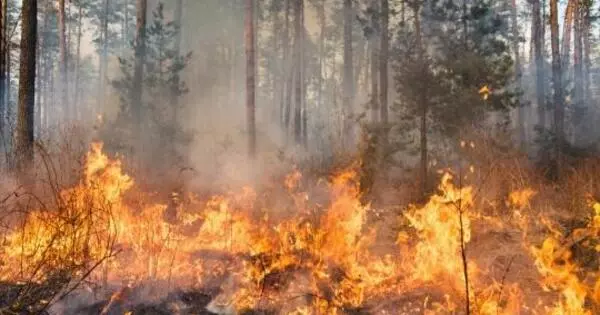A new McGill University study finds a higher incidence of lung cancer and brain tumors in people exposed to wildfires. The study, which follows over two million Canadians for 20 years, is the first to look at how proximity to forest fires affects cancer risk.
“Wildfires tend to occur in the same locations year after year, but we know very little about the long-term health effects of these events. Our findings suggest that living near wildfires may increase the risk of certain cancers” Scott Weichenthal, Associate Professor in the Department of Epidemiology, Biostatistics, and Occupational Health at McGill University, agrees.
The study, published in The Lancet Planetary Health, found that people who lived within 50 kilometers of wildfires had a 10% higher incidence of brain tumors and a 4.9% higher incidence of lung cancer than those who lived further away.
The effects of wildfire smoke can range from irritation of the eyes and respiratory tract to more serious disorders such as reduced lung function, bronchitis, exacerbation of asthma and heart failure, and premature death. Smoke is especially dangerous to children, pregnant women, and the elderly. Those exposed to smoke from wildfires are known to visit hospitals and clinics in greater numbers.
Wildfires tend to occur in the same locations year after year, but we know very little about the long-term health effects of these events. Our findings suggest that living near wildfires may increase the risk of certain cancers.
Scott Weichenthal
It is critical to better understand the human health effects of short- and long-term exposure to smoke from wildfires as well as prescribed fires, which are referred to collectively as wildland fires. Research is being conducted to improve understanding of the health effects of various types of fires as well as combustion phases.
Impacts of climate change on human health
Wildfires are expected to become more common, severe, and long-lasting as the climate changes, and they are increasingly recognized as a global health problem. “Many of the pollutants emitted by wildfires are known human carcinogens, suggesting that exposure could increase cancer risk in humans,” says Jill Korsiak, a PhD student in Professor Weichenthal’s lab who led the analysis.
Wildfires typically occur in similar regions each year, and as a result, people living in nearby communities might be exposed to carcinogenic wildfire pollutants on a chronic basis, warn the researchers.

Lingering harmful pollutants
Wildfires pollute aquatic, soil, and indoor environments in addition to affecting air quality. While some pollutants return to normal levels shortly after the fire has been extinguished, others, such as heavy metals and hydrocarbons, may remain in the environment for extended periods of time. “Exposure to hazardous environmental pollutants may continue beyond the period of active burning through a variety of routes,” Professor Weichenthal adds.
A wildfire is an unintentional fire that occurs in a natural area such as a forest, grassland, or prairie. Wildfires are frequently caused by human activity or natural phenomena such as lightning, and they can occur at any time or in any location. It is unknown how half of the wildfires recorded started.
Wildfires are more likely in extremely dry conditions, such as drought, and during high winds. Transportation, communications, power and gas services, and water supply can all be disrupted by wildfires. They also cause air pollution and the loss of property, crops, resources, animals, and people.
According to the researchers, more research is needed to understand the complex mixture of environmental pollutants released during wildfires. They also state that more research is needed to develop more long-term estimates of wildfires’ chronic health effects.
















